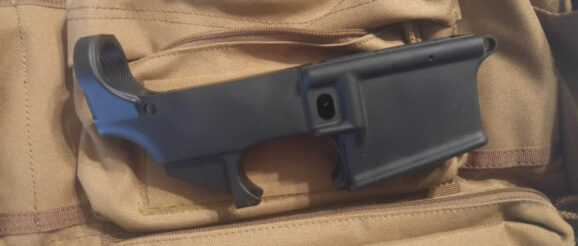Examining Ghost Guns: Navigating the Intersection of Innovation and Regulation | SOFREP

One of the key advantages of 3D-printed firearms is the versatility of materials that can be used as long one has the right equipment, skills, creativity, and knowledge.
Plastic-based 3D-printed firearms have gained significant attention due to their accessibility and ease of production. Guns printed using high-quality thermoplastics, such as nylon or ABS (Acrylonitrile Butadiene Styrene), can exhibit impressive durability and strength, making them suitable for various applications. These plastics can withstand the forces generated during firing and offer a viable option for individuals looking to explore 3D-printed firearms.
Meanwhile, using metal-based 3D printing technologies, such as Direct Metal Laser Sintering (DMLS) or Selective Laser Melting (SLM), has opened up new frontiers in firearm manufacturing. These technologies allow for the precise layering of metal powders fused together using lasers, resulting in solid metal parts. The ability to print firearms using metals like stainless steel, titanium, or aluminum alloys provides enhanced strength, durability, and overall performance.
The accessibility and affordability of 3D printing technology have also democratized firearm manufacturing. With readily available designs and open-source platforms, individuals can access a vast repository of firearm blueprints, enabling them to create their own firearms at a fraction of the cost of purchasing a commercially manufactured firearm. This has empowered gun enthusiasts to exercise their creativity, customize their firearms to meet their unique preferences, and embrace the art of gunsmithing in a whole new way.
The DIY Culture and Privacy Debate
The emergence of ghost guns and 3D-printed firearms has raised significant concerns regarding weapon control and public safety. As these weapons lack serial numbers or registration, they become exceedingly difficult to trace, allowing them to potentially fall into the wrong hands without detection. This challenges law enforcement agencies to identify and prevent illegal firearms circulation.
Despite recent portrayals in the mainstream media, building guns at home has been a longstanding American pastime, deeply rooted in our history. It is integral to a thriving DIY (Do-It-Yourself) culture that celebrates self-reliance and personal ingenuity. Advocates of ghost guns and 3D-printed firearms argue that these technologies allow individuals to exercise their Second Amendment rights while preserving their privacy. However, detractors raise valid concerns about the potential ramifications of unregulated production, highlighting the possibility of an increase in illicit firearms, which could pose risks to public safety and facilitate criminal activities. Governments and lawmakers are grappling with addressing the proliferation of ghost guns and 3D-printed firearms. Some jurisdictions have implemented restrictions or bans on these weapons’ sale, possession, or production. Others are exploring legislative measures to regulate the distribution of 3D printing blueprints and parts kits. Striking a balance between individual rights and public safety remains a complex and ongoing challenge.
Nevertheless, as previously discussed, building ghost guns requires certain skills and basic knowledge of operating equipment such as 3D printers. Some criminals lack the knowledge and expertise to do so. The tediousness of the building process from scratch requires much effort compared to purchasing a firearm, which remains cheaper and more accessible through straw purchases, the black market, or theft.
To wrap up, ghost guns and 3D-printed firearms represent a new era of weapons technology, challenging traditional notions of control and regulation. As technology continues to advance, the impact of these firearms will evolve, necessitating proactive measures to address the associated risks. Finding a comprehensive solution that upholds individual rights while ensuring public safety remains paramount for lawmakers, law enforcement agencies, and the general population.
What are your thoughts on Ghost guns? Have you built one? Would you fire one that someone else built?
We’d love to hear your opinions in the comments.
